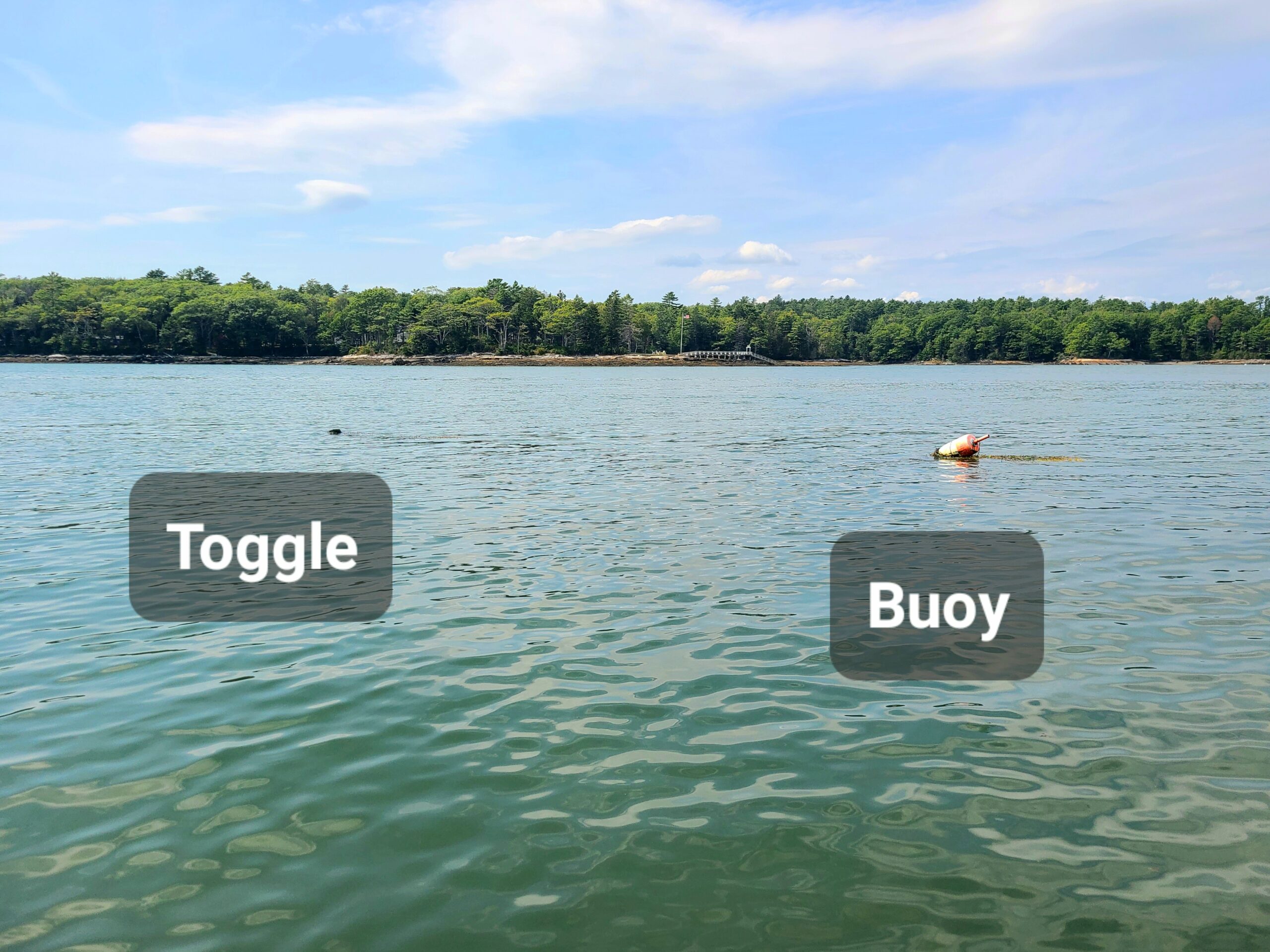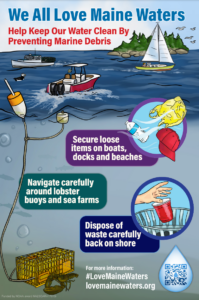Navigating Carefully Around Lobster Buoys Can Help Prevent Marine Debris and Economic Loss
Tips to Navigate Carefully Around Lobster Buoys
Stay downwind / down current:
Lobster buoy spindles tend to point downwind or down current. Pass on the downwind or down current side of the colored buoy.
Watch for buoy toggles:
Toggles are smaller foam buoys (typically white or tan colored) and often are slightly submerged. Toggles will be on the upwind or up current side of the attached buoy. The line from the toggle to the buoy is easy to snag. Stay downwind of colored buoys to avoid this issue.
Don’t cut and run:
Do not rely on prop cutters – cutting lines releases traps in a way that does not allow them to be recovered, creating hardship for fishermen and the environment.
Take it slow:
Don’t run at high speeds, especially in fog, darkness, or challenging visibility.
To Free A Line Snagged On Your Prop Or Rudder
Shift into neutral:
Stop the prop from turning.
Carefully try to free the line:
The wind or current may back you off the line. Use a boat hook to try to push the line free from various angles. If conditions allow, you may need to get into a dinghy (or enter the water). Weight can be taken off the line near the toggle by tying it off to a cleat or winch to help ease the strain on the section of line with the colored buoy.
Ask for assistance:
Call for assistance using your VHF if needed. A nearby lobsterman, passing boater, or for-hire towing vessel may be able to assist you.
Be Respectful and Prevent Marine Debris

Example of lobster buoy and toggle arrangement. In this situation a vessel would want to stay to the right and keep the larger buoy to their port side.
Example of a lobster buoy getting pulled under in the current at high tide. This is not a problem in a kayak, but other vessels need to keep an eye out for this occasional scenario.

